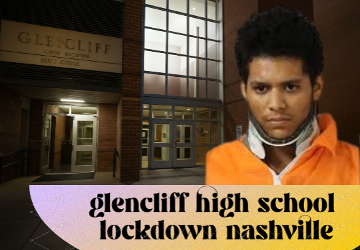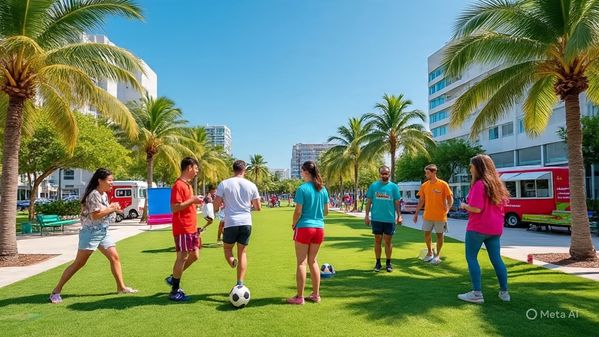
Glencliff High School Lockdown in Nashville: What Happened and What We Can Learn
Introduction
On February 7, 2025, Glencliff High School, located in South Nashville, was briefly placed under lockdown after reports of a potential weapon surfaced. The situation, which began with overheard student chatter, led to swift action from school authorities and local law enforcement. While ultimately deemed a false alarm, the incident highlights crucial questions about school safety, emergency protocols, and student well-being in today’s climate.
This blog post dives into the events of that day, how they unfolded, and the broader implications of precautionary lockdowns. Along the way, we’ll explore modern security challenges schools face and preventive measures to maintain safe environments.
What Triggered the Lockdown?
Lockdowns in schools are not declared lightly. For Glencliff High, the chain of events began with a sharp-eared staff member overhearing students discussing the possibility of a weapon on campus. Taking no chances, the staff member immediately alerted School Resource Officers (SROs). This prompt action set into motion a search for two students who were potentially involved in the discussion.
Response from Authorities
The first identified student was located and searched by the SROs. No weapon was found. However, this student identified a second individual who had left their classroom without permission. Recognizing the potential seriousness of the situation, school authorities initiated a campus-wide lockdown while the search continued. The second student was located shortly after, and they were also searched, yielding no weapon and confirming that there was no actual threat.
Lifting the Lockdown
With both students accounted for and no evidence of a weapon found, the lockdown was lifted. Around the same time, Metro Nashville Public Schools (MNPS) assured the community that while the initial reports were concerning, the situation was under control, and normal operations resumed.
The Role of Swift Reaction
One of the standout aspects of the Glencliff High School lockdown was how quickly staff and law enforcement responded. Within minutes, protocols were activated, and every possible measure was taken to ensure the safety of the students and staff.
Why Speed Matters in Crisis Response
When a potential threat is perceived in a school setting, every second counts. Quick decision-making can prevent injuries and de-escalate situations as they arise. For Glencliff High, the faculty and SROs worked hand-in-hand, allowing the situation to be resolved in under an hour. Their efficiency served as a testament to the importance of well-drilled safety protocols in schools.
Communication with the Community
MNPS communicated promptly with the public, providing updates about the lockdown and its resolution. Keeping families informed is critical in such events, as it prevents the spread of misinformation and relieves anxiety among parents.
How Safe Are Schools Today?
The Glencliff lockdown brought renewed focus to school security. Although the weapon-related conversation turned out to be nothing more than hearsay, the incident underscored the constant vigilance required to maintain a safe learning environment.
Rising Concerns
Schools across the U.S. are no strangers to lockdown drills and heightened security measures. Reports of gun violence and safety incidents have prompted nationwide discussions about how schools are managing threats. According to recent data, over 95% of U.S. schools conduct lockdown drills as part of their emergency planning. While these drills are effective, they also reveal an unsettling reality about modern education.
The Effect on Students
One notable issue during lockdowns is their psychological impact. Even false alarms, as seen at Glencliff High, can trigger stress and anxiety in students. For instance, several Glencliff parents reported that their children remained uneasy even after being assured of their safety. Educators and mental health professionals must carefully balance physical safety measures with emotional well-being.
Safety Technology Advancements
Many schools are now investing in advanced safety solutions like AI-powered metal detectors and facial recognition systems. Although Glencliff High’s incident was resolved without involving such technologies, schools in the Nashville area have increasingly adopted systems to prevent weapons from entering campuses. These systems serve as valuable tools to proactively mitigate potential risks.
Lessons from the Glencliff High School Lockdown
When we assess the Glencliff High School lockdown in Nashville, there are immediate questions about what can be learned. Was this a failure of communication, or was it an example of precaution done right? Here’s what stands out:
Clear Protocols Save Lives
Had the staff member ignored the suspicious conversation, the situation might have played out differently. Consistent training and clear communication channels ensured the right steps were taken promptly.
Importance of Collaboration
The teamwork between staff and SROs proved vital. Without cooperation, the search for the second student could have been delayed, prolonging the perceived threat and stress on the school community.
False Alarms Aren’t Always Negative
False alarms provide opportunities to test and improve crisis systems. For Glencliff High, the event proved that their lockdown procedures are effective in ensuring safety and building trust with students and families.
What’s Next for Glencliff High and Nashville Schools?
The challenges schools face when addressing security concerns are complex. Beyond the immediate lockdown procedures, schools like Glencliff High can take steps to better prepare for future events.
Increasing Staff Awareness
One key takeaway from the Glencliff lockdown is how observant staff played a crucial role. More training programs can empower teachers and staff to identify and report unusual behavior or conversations.
Refining Student Support
It’s equally important to ensure students feel comfortable voicing their concerns. Accessible counseling resources and frequent check-ins with students can make a big difference in preventing potential crises.
Leveraging Technology
AI innovations like weapon-detecting scanners are becoming more common in schools across Nashville. Expanding these resources while maintaining students’ privacy will play a key role in proactive security.
FAQs on the Glencliff High School Lockdown
Why was Glencliff High School placed on lockdown?
The lockdown was triggered when a staff member overheard students discussing the possibility of a weapon on campus. Authorities searched the individuals involved, but no weapon was found.
How long did the lockdown last?
The lockdown was resolved fairly quickly, lasting less than an hour from the initial identification of the potential threat to its resolution.
Was there any actual danger to students or staff?
No. After thorough investigations, it was established that there was no weapon and no actual threat.
How did parents find out about the situation?
Metro Nashville Public Schools communicated updates to parents promptly, letting them know about the lockdown and the actions being taken.
What’s being done to stop future incidents like this?
Schools are doubling down on safety protocols, continued staff training, open communication, and implementing cutting-edge technology to minimize risks.
Conclusion
The Glencliff High School lockdown in Nashville served as a reminder of the complexities surrounding school safety in 2025. While it was ultimately a false alarm, the swift response from staff and law enforcement highlighted the importance of having well-rehearsed protocols and clear communication in place. Schools today face unprecedented challenges, but by fostering a culture of vigilance and collaboration, they can ensure that safety doesn’t come at the cost of students’ learning and well-being. With ongoing improvements and lessons learned, communities like Nashville can take proactive steps to protect their schools.






